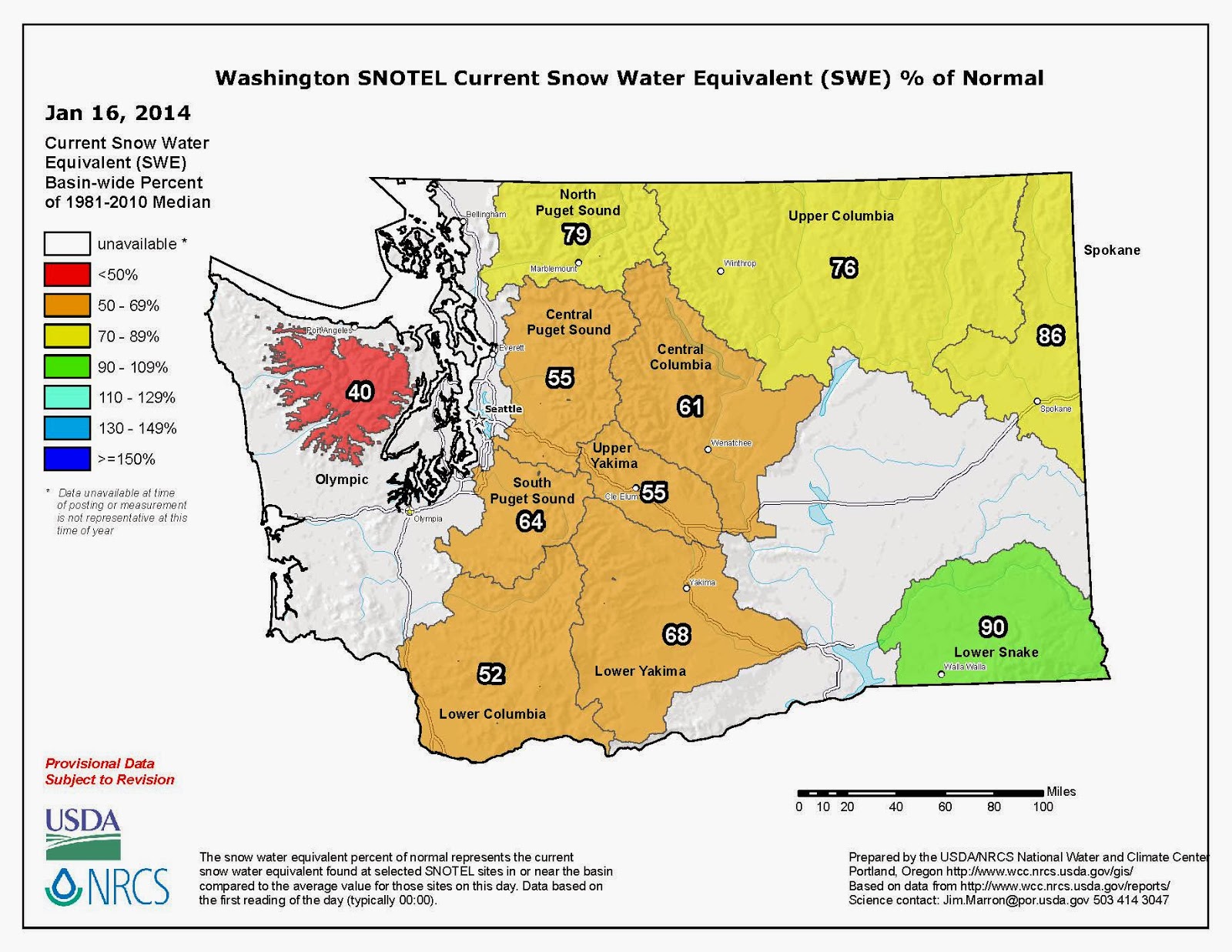 I grab my jacket and slide it on as I step outside. I walk a
few paces and realize I’m already too warm. It’s halfway through January and
the temperatures outside are hovering around 50o. It’s only snowed in
town a couple times all winter. The sun is shining, and it seems like spring is
just around the corner. Too bad it’s not. Winter will be back. However, it’s still
nice for a break, right? It may feel nice, but this weather is not without consequences. What might those consequences be? Well, let’s take a look.
I grab my jacket and slide it on as I step outside. I walk a
few paces and realize I’m already too warm. It’s halfway through January and
the temperatures outside are hovering around 50o. It’s only snowed in
town a couple times all winter. The sun is shining, and it seems like spring is
just around the corner. Too bad it’s not. Winter will be back. However, it’s still
nice for a break, right? It may feel nice, but this weather is not without consequences. What might those consequences be? Well, let’s take a look.
First, the lack of snow is a big problem. Yes, I love having
clear roads as much as anyone else. The headache of waking up with six inches
of new snow and realizing I’m going to spend an hour or two of my day
shoveling/plowing just to clear my driveway and paths is not pleasant. Neither
is dealing with slick roads and all the other people out on the slick roads. (Funny how everyone always thinks it’s the other person that’s
the bad driver.) I love being able to travel the mountain passes with peace of
mind.
So why is the lack of snow such a problem? We receive very
little precipitation throughout the year. What precipitation we do receive
mainly comes as snow in the winter months. That buildup of snow in the mountains
provides a water source for the rest of the year. When spring arrives and the
temperatures begin to rise in the mountains the snowpack starts to melt. This
melt feeds creeks, rivers, and lakes throughout the spring and summer, and
starts to taper off in the fall. Without winter snow the snowpack won’t build up.
Without a proper snowpack water flows will be hampered.
What happens when there’s less water? Well, that’s what we
call a drought. Water suddenly becomes a hot commodity. Let me list a few
things that rely on water flowing from the snowpack: dams, crops, orchards, lawns,
drinking water, animals, fish, forests, and water recreation. I could keep
going. The point is when there’s not enough water available everything loses.
First go the unnecessary items. You’ll be asked to conserve water by watering
your lawns and gardens less (or stopping all together if it’s severe enough), showering more efficiently, etc. Next, farmers with newer water rights may have to water their fields and orchards less. Of course someone could keep pulling
out water and further lower the water levels, but that starts to affect the
fish. Less water means streams, rivers, and lakes have less area to swim in.
Less water means that the water will warm up quicker and get hotter than normal.
Fish like cool water. An almost afterthought to most of us is the forests. Our
forests do most of their growing in the spring from the influx of water from
the snowpack. The less there is and the sooner it melts off leads to dry
forests earlier in the year, increasing the chance of and severity of forest
fires. Less water in the rivers lowers the amount of power that dams can
generate.
Starting to get the picture? Snow is necessary. We must
embrace the winter in order to enjoy the spring, summer, and fall. Without the
winter snow, the rest of the year may be miserable.
My second point revolves around this warm weather we’re
experiencing at the moment. A warm, sunny day seems nice, and one or two might
not be that harmful, but extended warmth can lead to problems. Why?
Most plants go into dormancy for the winter. That means they
shut down most of their natural processes. They flood their cells with
chemicals that protect themselves from the winter cold, and wait it out.
Generally, they wait until early spring to start the growth process. But what
triggers their growth? We label March 20 as the first day of spring because
it’s the spring equinox. (Our seasons change on the equinoxes and solstices.)
However, a plant can’t read a calendar and decide when to break dormancy by a
calendar date. A plant breaks dormancy on external cues. Mainly cues involving
temperature.
See where I’m going with this? If the weather stays warm for
too long in the middle of winter the plants might be tricked into thinking it’s
time to break dormancy. They start their new growth leading to tender new
shoots and flowers. The weather then crashes back down to normal winter
temperatures. The new plant tissue can’t handle freezing temperatures and
therefore dies.
Field crops might not be affected by this at all. A farmer
realizes that these warm temperatures aren’t sustainable, and therefore doesn’t
plant anything until spring. But trees aren’t this smart. They start to grow
and head towards blooming. When the temperature crashes the new buds are killed
off. No blossoms that year, and thus no fruit.
A mild winter like this seems nice, one with a warm, sunny
week in the middle of January, and only a day or two of snowfall in town. You
may be reveling in the decent driving conditions and your
 |
| The numbers are starting to look up from previous measurements, but are still far below where they should be. |


No comments:
Post a Comment